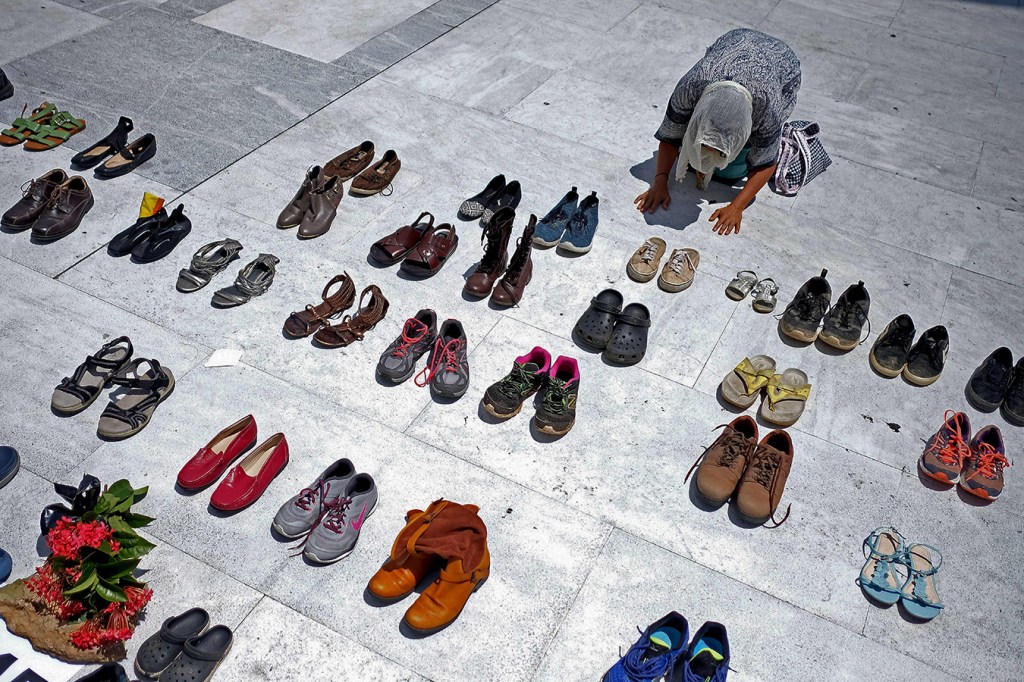The question of how many people perished after Hurricane Maria in Puerto Rico has stirred controversy because of the wide discrepancies between the territory’s official count and independent reports. Now, two researchers have added a new tally that uses the island government’s own data but far outpaces its death estimate.
Their analysis found an increase of 1,139 deaths over what would be expected in Puerto Rico in the 2½ months following the storm. The Category 4 storm lashed the American territory last September, displacing tens of thousands of residents, destroying the electric grid and downing communications services. The National Hurricane Center estimates the storm caused $90 billion in damages in Puerto Rico and the U.S. Virgin Islands.
The new count comes in a research letter published Thursday in the journal JAMA that compared death certificates obtained from the Puerto Rican government to the historical average for deaths over a three-month period.
Researchers first calculated the average number of deaths per month from January 2010 to December 2017 and an upper and lower limit for the number of deaths that had occurred in each month. Their findings concluded that an excess of 459 deaths occurred last September, 564 in October and 116 in November. The count normalized by December.
Alexis Santos-Lozada, a co-author of the research letter and an assistant professor of human development and family studies at Penn State University, said he was puzzled as to why the island’s government has kept the official death count at 64. The documents his team used came from the territory’s cache of data.
“We just didn’t want inaccurate numbers to guide policy decisions such as money to mitigate the effects of the hurricane or money to remediate and rebuild the island,” Santos-Lozada said.
The study’s results come close to one earlier estimate of the storm’s deaths. An analysis by The New York Times of the government’s vital-statistics records found that the number of deaths in the 42 days after the storm were higher than expected by 1,052.
But other estimates have varied widely.
The Puerto Rican government’s official count has been widely criticized as too low. Another study, published in May in The New England Journal of Medicine, reported 4,645 people died as a result of the storm. Those findings were calculated from a random survey of more than 3,200 households on the island.
Stung by the controversy over fatalities, Puerto Rico’s government contracted with George Washington University researchers to conduct an independent death count. Those results are expected later this summer.
John Mutter, a professor at Columbia University who researches disaster management and who worked on collecting the number of deaths in New Orleans after Hurricane Katrina, said the United States does not have a defined position on a federal or state level about who is responsible for estimating fatalities after natural disasters.
The Centers for Disease Control and Prevention does “a very, very conservative” count, he said, but these numbers can vary based on the parameters used by the researchers compiling the data.
“When people talk about the official death count,” Mutter said, “who’s the official who made the count?”
Among the factors that can influence the results of any estimate are the timespan analyzed and the definition of a hurricane-related death, Mutter said. People with preexisting medical conditions who perish in a natural disaster are sometimes not quickly picked up as part of the count since their illness preceded the natural emergency. However, Mutter said, these individuals are generally counted.
In Puerto Rico, this is an important group. Many people’s illnesses were exacerbated by the lack of supplies, clean water and especially the long-term power outages caused by Hurricane Maria. The lack of electricity meant ventilators could not run, medications such as insulin could not be refrigerated, and hospitals did not have the equipment available for fragile patients, such as premature newborns.
Regardless of who is included in the count, no assessment can capture everyone who died —especially in events that involve missing persons, said George Haddow, former deputy chief of staff for the Federal Emergency Management Agency during the Clinton administration.
“People disappear in disasters,” he said.
Mutter said it’s imperative that the most accurate death count possible be obtained because it drives the public’s attention — and dollars — to the needs of the survivors and to lessons for future disasters. Death counts like those seen in the aftermath of Hurricanes Katrina and Maria show a breakdown in the system that should be addressed.
“Big numbers always suggest something’s wrong,” Mutter said.
This story was produced by Kaiser Health News, an editorially independent program of the Kaiser Family Foundation.
